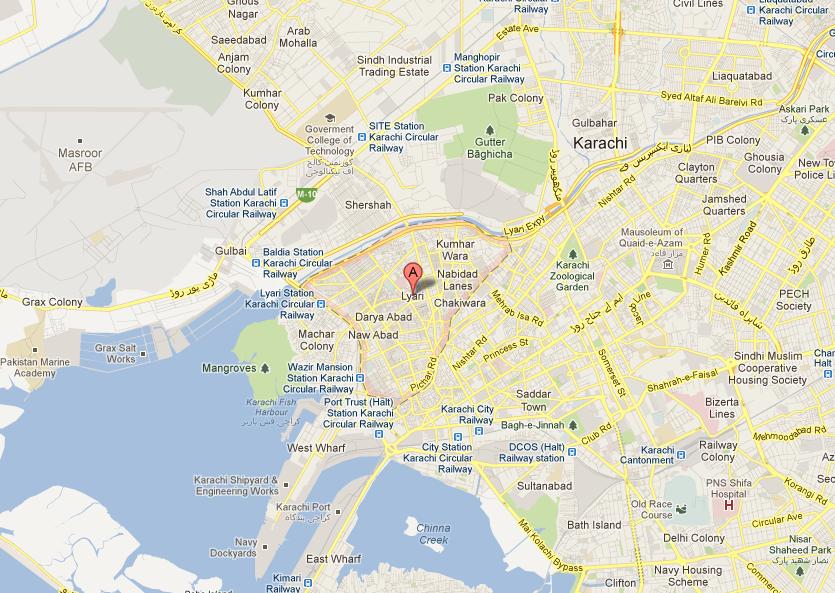Nestled in the vibrant heart of Lyari Town, Karachi, the Shah Abdul Latif Hall stands as a beacon of cultural heritage and community spirit. Located in the historic Mosa Line area, this hall is more than a venue—it is a symbol of Lyari’s resilient cultural identity.
With its deeply rooted connection to Sindhi and Balochi traditions, the hall plays a pivotal role in preserving the legacy of Shah Abdul Latif Bhittai, one of Sindh’s most revered Sufi poets. Mosa Line, a bustling neighbourhood known for its rich history and close-knit community, serves as the perfect backdrop to this iconic hall.
The Shah Abdul Latif Hall is more than just a structure—it is a gathering place where art, music, and traditions come alive. It fosters community bonds through events, celebrations, and educational programs. This hall is an enduring testament to the harmonious coexistence of diverse cultural identities in Lyari, making it a vital cultural and social hub.
- History of Lyari and Shah Abdul Latif Hall
- Cultural and Social Significance
- Architectural Features of Shah Abdul Latif Hall
- Mosa Line and Its Role in Lyari
- Exploring the Map: Directions and Accessibility
- Community Engagement and Activities
- Preservation and Challenges
- Future Prospects and Development Plans
- Visitor Information
- Conclusion
- FAQs
History of Lyari and Shah Abdul Latif Hall
Lyari is one of Karachi’s oldest and most storied neighbourhoods. Known for its vibrant streets, passionate residents, and strong community ties, Lyari has historically been a centre of political, cultural, and social activity. From its origins as a modest settlement, Lyari has evolved into a thriving urban hub, characterized by its rich cultural tapestry.
Shah Abdul Latif Hall was established as a tribute to the iconic Sufi poet Shah Abdul Latif Bhittai, whose work celebrates love, tolerance, and humanity. The hall was built to promote these values, serving as a space for cultural exchange and education. Over the years, it has become synonymous with Lyari’s dedication to preserving Sindhi and Balochi heritage.
Cultural and Social Significance
The Shah Abdul Latif Hall is a cornerstone for showcasing Sindhi and Balochi traditions. From poetry recitations to musical performances and traditional dance festivals, the hall is instrumental in keeping these rich cultures alive.
The hall frequently hosts events ranging from cultural festivals to academic seminars. These gatherings provide a platform for local artists, musicians, and speakers to share their talents, bridging generational and cultural gaps in Lyari.
By celebrating the diverse cultural identities of Lyari’s residents, the hall fosters mutual respect and understanding. It acts as a bridge, uniting people through shared heritage and collective aspirations.
Architectural Features of Shah Abdul Latif Hall
The Shah Abdul Latif Hall’s architecture reflects a blend of modern functionality and cultural motifs. Intricate designs inspired by Sindhi and Balochi patterns adorn the building, symbolizing the artistic legacy of the region.
The hall’s design pays homage to Sindhi heritage, with vibrant murals and motifs depicting Shah Abdul Latif Bhittai’s poetic themes. Its spacious interiors and high ceilings create an inviting atmosphere for gatherings.
The hall’s unique features include its well-equipped auditorium, cultural exhibits, and a small library dedicated to Shah Abdul Latif Bhittai’s works. These elements make it a multifunctional venue that serves both educational and cultural purposes.
Mosa Line and Its Role in Lyari
Mosa Line, located near Lyari Expressway and Cheel Chowk, is a vibrant neighbourhood that embodies the spirit of Lyari. Its streets are filled with a mix of traditional and modern influences, making it a hub for local activity.
Mosa Line holds a special place in Lyari’s history, serving as a center for community interaction. Its proximity to landmarks like Lyari General Hospital and Karachi Metropolitan Corporation offices adds to its significance.
Mosa Line’s strategic location enhances its role in connecting Lyari’s residents to cultural hubs like Shah Abdul Latif Hall. Improved accessibility has further strengthened its contribution to community development.
Exploring the Map: Directions and Accessibility
Shah Abdul Latif Hall is easily accessible from major locations in Karachi. Located near Lyari Expressway, visitors can reach the hall via the main Cheel Chowk junction. Public transport options like buses and rickshaws are widely available.
Prominent landmarks such as Lyari Expressway and Cheel Chowk make it easier to locate the hall. These landmarks serve as key reference points for visitors unfamiliar with Lyari’s layout.
Lyari is well-connected through public transportation networks. Visitors are advised to use rideshare apps or local buses for a hassle-free journey. Early morning or late afternoon visits are recommended for an optimal experience.
Community Engagement and Activities
The Shah Abdul Latif Hall regularly organizes cultural workshops, art exhibitions, and literary events. These activities encourage community participation and nurture local talent.
Local NGOs and community groups actively collaborate with the hall to organize events and drive social initiatives. Their contributions are pivotal in enhancing Lyari’s cultural vibrancy.
Residents speak passionately about the hall, describing it as a symbol of pride and unity. Many recall attending life-changing workshops and celebrations that strengthened their ties to their heritage.
Preservation and Challenges
While the hall remains a vital cultural landmark, it faces challenges such as limited funding for maintenance. Efforts by the Lyari Town Administration and Sindh Government aim to preserve its charm.
Urbanization and budget constraints pose significant hurdles in preserving Lyari’s cultural heritage. Advocacy by local communities and organizations is crucial for safeguarding such landmarks.
The Sindh Government, alongside local NGOs, has initiated projects to restore and promote Shah Abdul Latif Hall. These efforts ensure that the hall continues to serve as a beacon of cultural preservation.
Future Prospects and Development Plans
The hall is envisioned as a modern cultural center that continues to celebrate Sindhi and Balochi traditions. Plans include upgrading facilities to enhance its appeal to visitors.
Future projects include adding multimedia facilities, improving seating arrangements, and creating interactive exhibits. These upgrades aim to make the hall more accessible and engaging.
Shah Abdul Latif Hall has the potential to become a major cultural tourism attraction. By highlighting its unique offerings, Lyari can position itself as a destination for heritage tourism.
Visitor Information
The hall is open daily from 9 AM to 7 PM. Entry is free for most events, but some programs may require prior registration. Visitors can contact the Lyari Town Administration for more details.
Visitors are encouraged to explore the hall during cultural festivals for an immersive experience. Respect for local customs and traditions is appreciated. Nearby attractions like Lyari General Hospital and Cheel Chowk are worth exploring.
Start your day with a visit to Shah Abdul Latif Hall, followed by a walk around Mosa Line. Conclude your trip with a stop at Cheel Chowk for a glimpse into Lyari’s lively street culture.
Conclusion
Shah Abdul Latif Hall stands as a testament to Lyari’s cultural richness and resilience. Whether you’re drawn by the allure of Sindhi poetry, the vibrancy of Balochi traditions, or the warmth of Lyari’s community, this hall promises an unforgettable experience. By supporting preservation efforts, we can ensure this gem continues to inspire generations to come.
FAQs
What is the significance of Shah Abdul Latif Hall?
It serves as a cultural hub for promoting Sindhi and Balochi heritage while fostering community bonds.
How can I reach Shah Abdul Latif Hall?
The hall is easily accessible via Lyari Expressway and Cheel Chowk, with ample public transport options.
Are there any entry fees for visiting the hall?
Entry is typically free, though certain events may require registration.
What events are held at Shah Abdul Latif Hall?
The hall hosts cultural festivals, workshops, art exhibitions, and literary events.



